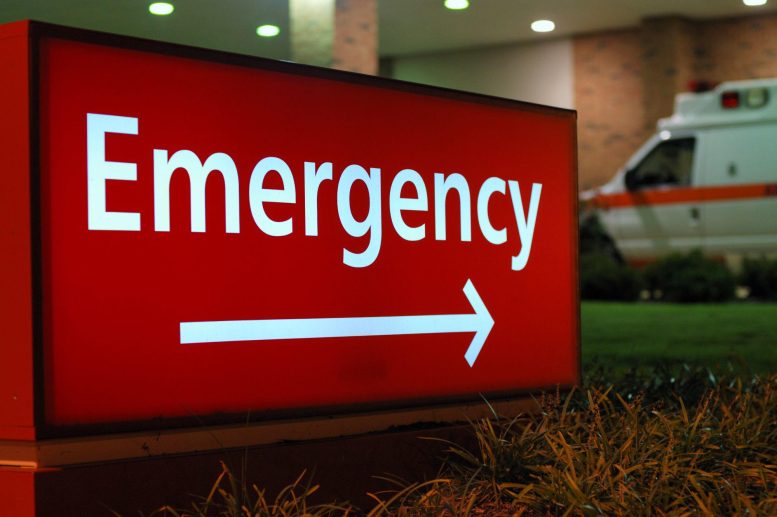
It is estimated that a new instance of sexual assault occurs every 68 seconds in the United States.
According to recent research, the increase in individuals seeking emergency medical attention following sexual assault is outpacing the growth of law enforcement reporting.
According to a recent study, more individuals are seeking emergency medical help for sexual assault.
According to the study published in the journal JAMA Network Open, emergency departments have seen 15 times more visits connected to sexual assault in the last ten years, outpacing the growth in law enforcement reporting.
“Sexual assault is a disturbing and prevalent trend in the U.S. We know that people who experience sexual assault face numerous emergent health problems but few seek emergency medical care,” said senior author Erica Marsh, M.D., chief of the division of reproductive endocrinology and infertility at the Center for Reproductive Medicine at University of Michigan Health Von Voigtlander Women’s Hospital.
“These findings demonstrate the role that healthcare providers can play in improving long-term medical and psychosocial health for these individuals.”
According to statistics from the Federal Bureau of Investigation, a sexual assault is estimated to happen in the United States every 68 seconds, with the number of rapes and sexual assaults recorded nationwide growing from 93,000 in 2006 to 139,815 in 2019.
According to research, those who have been sexually assaulted are more likely than their peers to have suicidal thoughts, posttraumatic stress disorder, depression, substance use, and chronic conditions.
However, traditionally, only a tiny proportion of individuals — as few as one in five, according to some studies — seek medical treatment for sexual assault, and when they do, the care they get is often inadequate or incomplete.
“Some of the care provided by our partners in the emergency medicine space to these survivors could ideally come from a known, trusted provider who has an established relationship with the patient and where patients feel like they’re in a safe space,” Marsh said.
“We need to better understand where those opportunities are and how we can respond to these health needs in diverse outpatient settings.”
Researchers analyzed data from millions of ED visits throughout the country and discovered that the number of adults aged 18 to 65 who sought ED treatment following sexual assault increased from 3,607 in 2006 to 55,296 in 2019.
According to Marsh, possible causes of the growth might include the de-stigmatization of sexual assault in society, changes to the way emergency medical providers code for it, and an increase in the incidence of sexual assault in the United States.
Meanwhile, there was a significant 8% decrease in admission rates for sexual assault during the same period – with more than 95% of these patients sent home after an ED visit and not being admitted to the hospital.
These decreasing hospital admission rates may be attributed to an increasing number of lower-acuity cases, more people preferring to avoid admission for confidentiality purposes, and/or decreased inpatient availability.
ED visits overall also increased by 23 % during the same time, with sexual assault visits making up less than 1 % of visits. Still, total hospital charges for sexual assault-related visits topped $233 million in 2019, up from $6.35 million in 2006.
“Although sexual assault comprises a small proportion of total emergency room visits, the magnitude of increase suggests that certain factors may be encouraging people who experience sexual assault to seek emergency care,” Marsh said.
Disparities in health needs, admissions
Patients with lower incomes and government insurance plans are disproportionately admitted to the hospital after sexual assault, the study suggests. Older people (aged 46-65) are also more likely to be admitted than younger people (ages 18-25.)
This may be attributed to other underlying conditions that could increase the need for hospitalization, Marsh says.
But those who seek help in the ED after sexual assault were also disproportionally younger women and those with lower incomes.
While sexual assault is highly prevalent— estimated to affect more than half of women and nearly a third of men in their lifetime, according to the Centers for Disease Control and Prevention—there have been few long-term studies of how people seek care after sexual assault.
Further studies should explore how to establish care for these patients in an outpatient or urgent care setting, Marsh says, such as providing testing for sexually transmitted infections, providing antibiotic and antiviral treatment on-site, facilitating mental health services, and collecting evidence in cases when patients are willing to be connected to law enforcement.
“Our findings highlight the populations who access emergency care most frequently and who is most likely to need hospitalized care,” she said.
“Tracking these trends will help inform policies and potential strategies for better supporting these individuals and for reaching others who may be less likely to seek emergency medical care for various reasons.”
Reference: “Trends in US Emergency Department Use After Sexual Assault, 2006-2019” by Emily L. Vogt, BA, Charley Jiang, MS, Quinton Jenkins, MPH, Maya J. Millette, BS, Martina T. Caldwell, MD, MS, Kathleen S. Mehari, MD and Erica E. Marsh, MD, MSCI, 20 October 2022, JAMA Network Open.
DOI: 10.1001/jamanetworkopen.2022.36273
The study was funded by the University of Michigan and the Department of Obstetrics and Gynecology.









Only one thing is responsible for this: pornography. It is massively destructive and over-available.
It`s primarily men who are responsible.